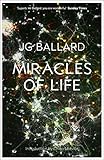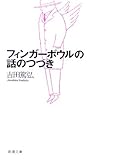WILLIAM GRIMES “Richard Hamilton, British Painter and a Creator of Pop Art, Dies at 89” http://www.nytimes.com/2011/09/14/arts/design/richard-hamilton-british-painter-and-a-creator-of-pop-art-dies-at-89.html
〈元祖ポップ・アート〉の英国の画家リチャード・ハミルトンが死去。享年89歳。
1956年にWhitechapel Galleryで開かれたグループ展This Is Tomorrowにて所謂「ポップ・アート」が誕生したといえるわけだが、This Is Tomorrowに出品されたハミルトンの”Just What Is It That Makes Today’s Homes So Different, So Appealing?”について;
マルセル・デュシャンの影響について*1;
Using images cut from mass-circulation magazines, the collage depicted a nude bodybuilder and a nude woman, posing alluringly on a sofa with a lampshade on her head, in a living room stocked with the goods and emblems of the postwar good life, American-style. A canned ham sits on an end table. A cover of Young Romance magazine is framed on the wall. The man holds a giant Tootsie Pop, with the word “Pop” occupying the center of the collage at eye level.“Such was the success of this tiny and painstaking collocation that many people are still stuck with the idea of Hamilton as the man who single-handedly laid down the terms within which Pop Art was to operate,” the critic John Russell wrote in the catalog for a 1973 Hamilton retrospective at the Solomon R. Guggenheim Museum.
それから、彼がビートルズの『ホワイト・アルバム』のジャケットをデザインしたことを(今頃になって)知る;
Mr. Hamilton’s veneration for Duchamp, and the concept of the ready-made, helped determine the course of his art after the 1960s. He manipulated found objects and photographs, putting his own spin on newspaper photographs, postcards and industrial objects ― like the Braun electric toothbrush, which he topped with a set of candy teeth ― as well as prints filtering the images of other artists.
グループ展This Is Tomorrowについては、JG. バラードの『生の奇蹟』*2第16章”This Is Tomorrow”(p.187ff.)で言及されており、バラードはThis Is Tomorrowを”the most important event in the visual arts in Britain until the opening of Tate Modern”と称賛している(p.187)。ハミルトンのほかにバラードが名前を挙げているのは彫刻家のEduardo Paolozziと建築家のPeter and Alison Smithson(ibid.)。
His dealer in the 1960s, the ultrahip Robert Fraser (also known as Groovy Bob), drew him into the vortex of the British pop-music world, reflected in the silkscreen-on-canvas series “Swingeing London,” depicting Mick Jagger and Mr. Fraser being driven away by the police after their 1967 drug arrest.During this period he met Paul McCartney, who hired him to design the cover for the Beatles’ next album. Surprisingly, Mr. Hamilton proposed an all-white jacket.
“To avoid the issue of competing with the lavish design treatments of most jackets, I suggested a plain white cover so pure and reticent that it would seem to place it in the context of the most esoteric art publications,” Mr. Hamilton told Rolling Stone in 1991.
To reinforce the idea of a small-press production, he embossed “The Beatles” in one corner almost haphazardly and numbered each copy in a style that suggested a hand-numbering machine. Inside, he included a collage poster of private Beatles photos.
In an interview with The Observer of London last year, he recalled that he had been paid 200 pounds for the assignment, adding, “I thought that was a bit mean.”

- 作者: J. G. Ballard,China Mieville
- 出版社/メーカー: Fourth Estate Ltd
- 発売日: 2008/11/01
- メディア: ペーパーバック
- 購入: 1人 クリック: 7回
- この商品を含むブログ (12件) を見る
『ホワイト・アルバム』をモティーフにした小説として、吉田篤弘『フィンガーボウルの話のつづき』があったな。

- 作者: 吉田篤弘
- 出版社/メーカー: 新潮社
- 発売日: 2007/07
- メディア: 文庫
- 購入: 2人 クリック: 15回
- この商品を含むブログ (49件) を見る
*1:デュシャンとポップ・アートの関係についてはhttp://d.hatena.ne.jp/sumita-m/20080102/1199294584で言及している。